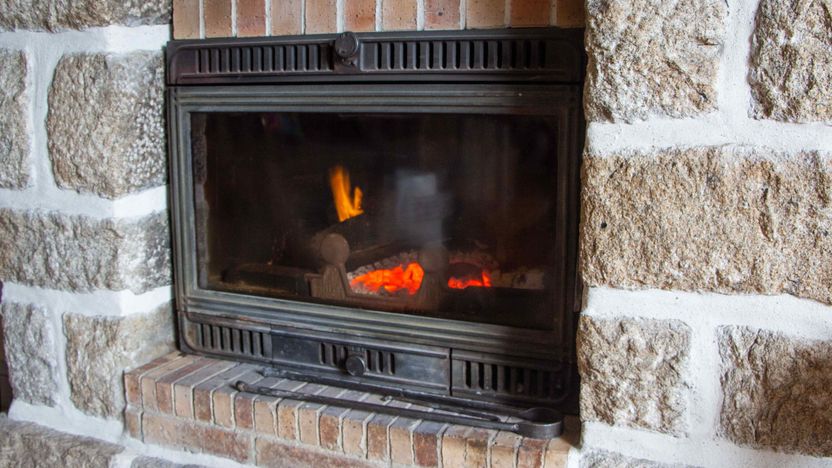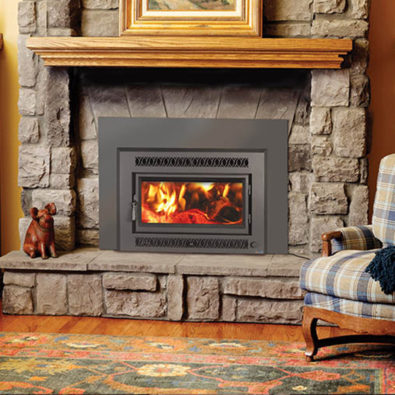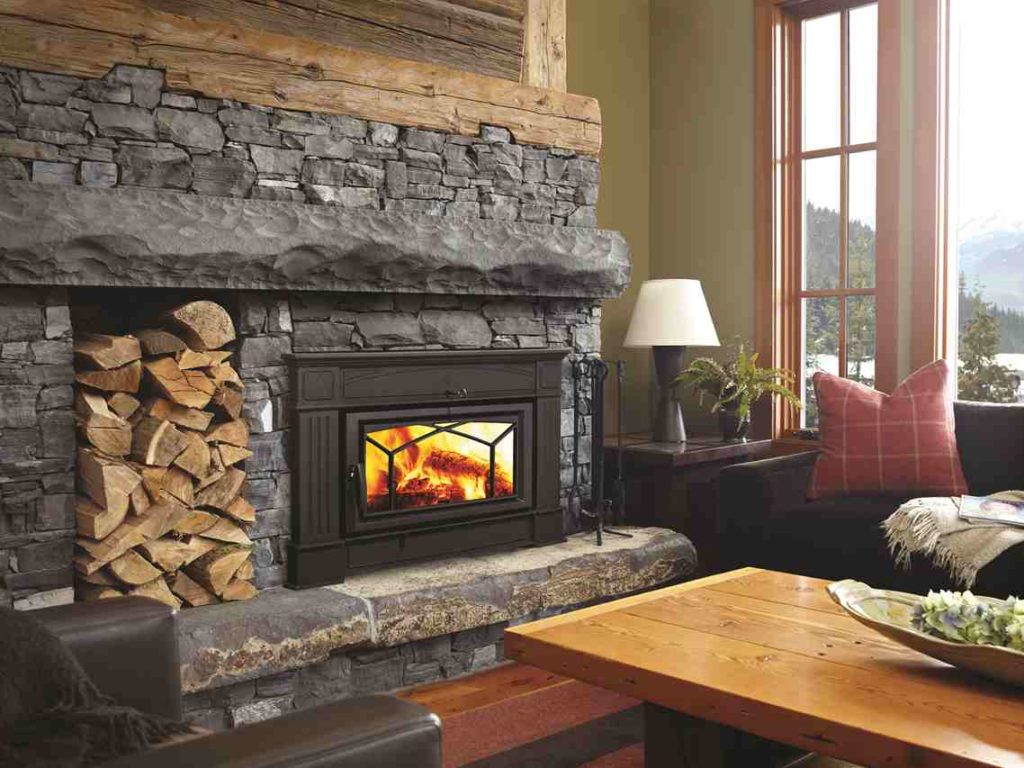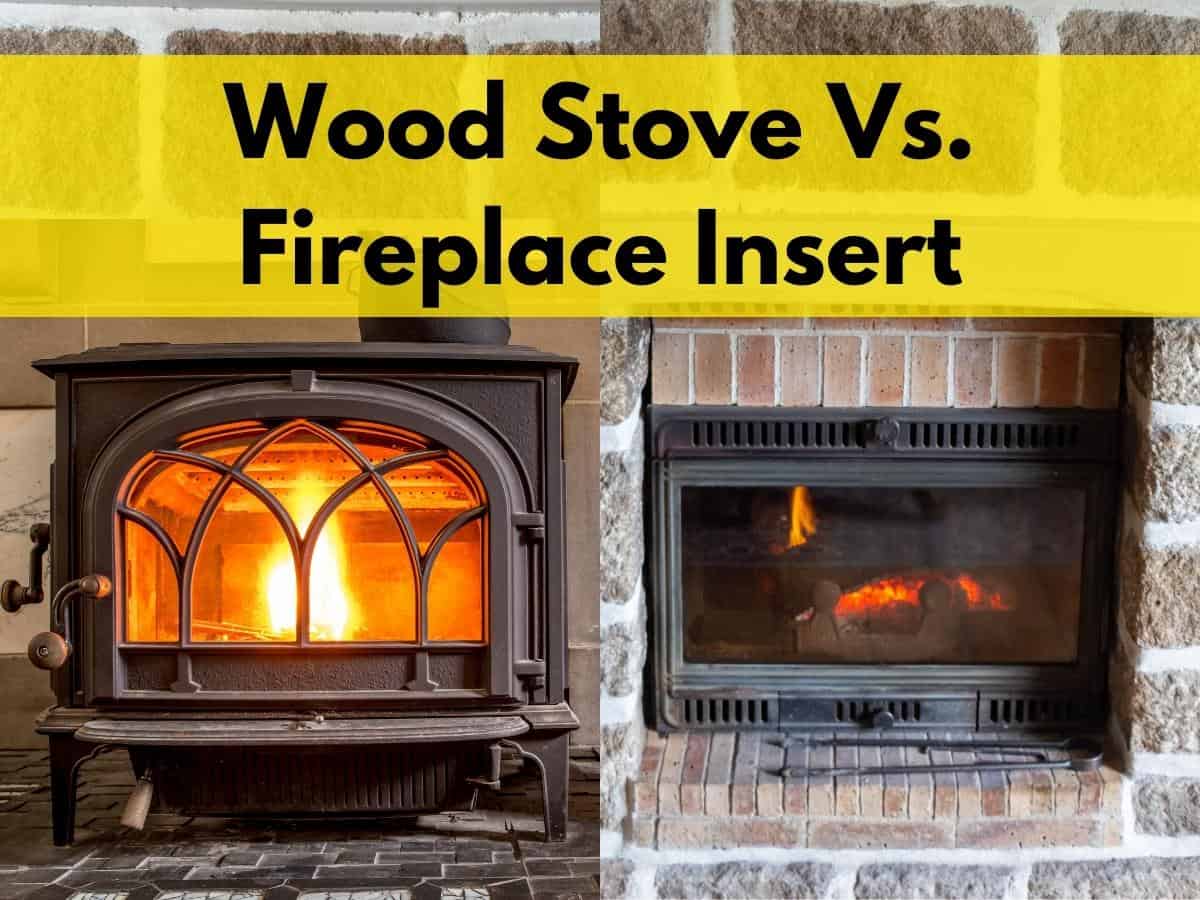Wood Fireplace Insert Buying Guide
A wood fireplace insert is an excellent way to improve the efficiency and performance of your existing wood-burning fireplace. Designed to fit into an existing masonry or prefabricated fireplace, wood inserts allow you to enjoy the warmth of a traditional fire while benefiting from modern innovations in heating technology. In this guide, we’ll cover everything you need to know about buying a wood fireplace insert, from the types available to installation, maintenance, and common mistakes to avoid. Let’s learn how you can upgrade your home with a wood fireplace insert.

What is a Wood Fireplace Insert?
A wood fireplace insert is a heating appliance that is installed inside an existing wood-burning fireplace. Unlike traditional open fireplaces, which lose a significant amount of heat through the chimney, wood inserts are designed to improve heating efficiency by containing the fire in a closed system. These inserts are typically made of cast iron or steel, and feature insulated glass doors that allow you to enjoy the view of the fire while maintaining a controlled burn.
The primary purpose of a wood fireplace insert is to enhance the performance of your fireplace by turning it into a more efficient and environmentally friendly heat source. Traditional fireplaces can lose up to 90% of their heat through the chimney, but inserts capture and radiate heat more effectively, often increasing heating efficiency by up to 70-80%. In addition to being energy-efficient, inserts can also reduce emissions, making them a greener option for heating your home.
Wood inserts come in various sizes and styles to fit different types of fireplaces. Whether you have a large masonry fireplace or a smaller prefabricated one, there’s an insert available to suit your needs. Many modern inserts are equipped with fans to circulate warm air into the room, further improving the heating capability. Some models also feature advanced combustion technologies that help reduce creosote buildup and increase the overall efficiency of the burn.

Types of Wood Fireplace Inserts
There are two main types of wood fireplace inserts to choose from: catalytic and non-catalytic. Understanding the differences between these two types will help you determine which is best suited to your home and heating needs.
Catalytic wood fireplace inserts are designed to achieve higher levels of efficiency by using a catalytic combustor. This device lowers the temperature at which combustion gases ignite, allowing for a slower and more efficient burn. As a result, catalytic inserts can produce more heat for a longer period of time while using less wood. They are ideal for homeowners who use their fireplaces as a primary heat source. One downside is that the catalytic combustor will need to be replaced over time, typically every 5-7 years, which requires some additional maintenance.
Non-catalytic wood fireplace inserts, on the other hand, rely on air tubes or baffles to maintain high temperatures inside the firebox. These inserts are typically easier to maintain than catalytic models because they don’t have a combustor that needs regular replacement. Non-catalytic inserts provide a more immediate and intense heat, making them suitable for people who use their fireplaces for supplementary heating rather than primary heating. However, they may not be as efficient as catalytic models in terms of overall fuel consumption and burn time.
In addition to choosing between catalytic and non-catalytic inserts, you’ll also need to consider the size and style of the insert. Inserts come in a range of sizes to fit different fireplace openings, and they are available in a variety of finishes and designs to match your home’s décor. Some inserts are designed with a more traditional look, while others have a sleek, modern aesthetic.

Benefits of Installing a Wood Fireplace Insert
Installing a wood fireplace insert offers numerous benefits, from improved energy efficiency to enhanced home comfort. One of the most significant advantages is the ability to transform your existing fireplace into an efficient heat source. Traditional open fireplaces lose most of their heat through the chimney, but wood inserts are designed to radiate heat back into the room, helping you stay warm while using less fuel.
Another major benefit of wood fireplace inserts is their environmental impact. By burning wood more efficiently, these inserts produce fewer emissions than traditional fireplaces, helping reduce your carbon footprint. Wood is a renewable resource, and when burned properly in an efficient appliance like an insert, it can be a sustainable and eco-friendly way to heat your home. Additionally, many wood inserts are EPA-certified, meaning they meet strict environmental standards for emissions.
Wood inserts can also increase the overall value of your home. A high-efficiency heating system is an attractive feature for potential buyers, and an insert can add aesthetic value as well. The variety of designs available allows you to choose a model that complements your home’s interior, whether you prefer a rustic, classic look or a more contemporary style. With the combination of enhanced functionality and visual appeal, installing a wood fireplace insert can be a wise investment.

How to Choose the Right Wood Fireplace Insert
When choosing a wood fireplace insert, there are several factors to consider to ensure you select the right model for your needs. The first step is to determine the size of the insert that will fit your existing fireplace. Measure the height, width, and depth of your fireplace opening to find an insert that fits properly. It’s important to choose an insert that fits snugly to maximize efficiency and prevent heat loss.
Next, consider the heating capacity of the insert. Wood fireplace inserts are rated by their ability to heat a certain square footage. If you’re using the insert to heat a small room, you can opt for a smaller model with a lower heating capacity. However, if you plan to use the insert to heat a large area or multiple rooms, you’ll need a larger unit with higher BTU (British Thermal Unit) output. Keep in mind that while a larger insert can heat more space, it may also consume more wood, so finding the right balance is key.
Lastly, think about the design and features you want in your insert. Some inserts come with built-in blowers or fans to help circulate heat more effectively, while others have self-cleaning glass systems that make maintenance easier. Additionally, you can choose between different door styles, from traditional black cast iron to modern glass fronts. The aesthetic of the insert should align with your home’s overall style, but functionality and performance should be your top priorities when making your final decision.

Installation Process for Wood Fireplace Inserts
Installing a wood fireplace insert is a process that typically requires professional expertise. It involves more than simply placing the insert inside the existing fireplace; proper installation ensures that the insert operates safely and efficiently. Before installation, a certified technician will inspect your chimney and fireplace to ensure they are in good condition and capable of supporting the insert. If any repairs or modifications are needed, these should be addressed before proceeding.
Once the fireplace is ready, the installer will begin by positioning the insert inside the fireplace opening. Many inserts require a liner to be installed inside the chimney to improve draft and prevent smoke from escaping into the room. The liner is typically made of stainless steel and extends from the top of the insert to the top of the chimney. This ensures that exhaust gases are properly vented out of the home.
After the insert is installed and the liner is in place, the technician will make any necessary adjustments to ensure a proper fit. This includes sealing any gaps between the insert and the fireplace opening to prevent drafts and heat loss. Once the installation is complete, the technician will test the insert to ensure it is working correctly, and they will provide you with instructions for operating and maintaining the unit.

Common Mistakes to Avoid
One common mistake people make when buying a wood fireplace insert is choosing the wrong size. An insert that is too small will not provide enough heat, while one that is too large may overheat the room or burn through wood too quickly. Taking accurate measurements of your fireplace and considering the size of the space you want to heat is essential for choosing the right insert.
Another mistake is neglecting to check the condition of the chimney before installation. A damaged or dirty chimney can lead to poor drafts, smoke backflow, and even chimney fires. Always have your chimney inspected and cleaned by a professional before installing a wood insert to ensure safe operation. Additionally, consider installing a chimney liner to improve efficiency and prevent issues down the road.
Finally, some homeowners overlook the importance of regular maintenance. While wood fireplace inserts are designed to be efficient, they still require routine care to function at their best. Creosote can build up inside the chimney over time, and the insert itself may need cleaning and minor repairs. Scheduling annual inspections and cleanings will help extend the life of your insert and keep it running efficiently.

Wood Burning Inserts – Complete Fireplace New Jersey

Wood burning fireplace

Best Wood Burning Fireplace Insert (Reviews & Buying Guide) 2024

Fireplace Insert Vs Wood Stove: What’s The Difference? – Organizing.TV

VERMONT CASTINGS WOOD BURNING FIREPLACE INSERTS Wood burning insert, Wood burning fireplace

Related Posts:
- Electric Fireplace Insert for Entertainment Center
- Electric Fire Inserts For Fireplaces
- Gas Fireplace Insert BTU
- Fireplace Insert Flashing
- Electric Fireplace Inserts Installation
- Decorative Fireplace Inserts
- Fireplace Insert Steamers
- Aurora Wood Burning Fireplace Insert
- Ceramic Fireplace Insert
- Electric Fireplace Insert with Crackling Sounds
A wood fireplace insert can be a great addition to your home, providing warmth, ambiance, and even potential cost savings on heating bills. However, there are many factors to consider when purchasing a wood fireplace insert. In this guide, we will discuss the benefits of wood fireplace inserts, the pros and cons, common mistakes to avoid, and answer some frequently asked questions.
Benefits of Wood Fireplace Inserts
Increased Efficiency: Wood fireplace inserts are designed to improve the efficiency of your existing fireplace by trapping heat and circulating it throughout your home. This can help reduce heating costs and make your home more comfortable during the winter months.
Energy Savings: Burning wood is typically less expensive than using other forms of fuel such as natural gas or electricity. By installing a wood fireplace insert, you can take advantage of this cost-effective heating option.
Environmentally Friendly: Wood is a renewable resource, making it a more environmentally friendly option compared to fossil fuels. Additionally, modern wood fireplace inserts are designed to burn wood more cleanly and efficiently, reducing emissions and air pollution.
Aesthetically Pleasing: Wood fireplace inserts can enhance the look of your home with their traditional design and cozy ambiance. They come in a variety of styles and finishes to complement your existing decor.
Pros and Cons of Wood Fireplace Inserts
Pros:
Cost Savings: As mentioned earlier, burning wood can be a cost-effective heating option compared to other fuels.
Increased Efficiency: Wood fireplace inserts can help maximize the heat output of your fireplace.
Environmental Benefits: Wood is a renewable resource, making it a more sustainable choice for heating.
Aesthetic Appeal: Wood fireplace inserts can add charm and character to your home.
Cons:
Maintenance: Wood fireplace inserts require regular cleaning and maintenance to ensure safe and efficient operation.
Firewood Storage: You will need to have a supply of firewood on hand to use your wood fireplace insert.
Air Quality Concerns: Burning wood can contribute to indoor air pollution if not done properly.
Installation Costs: The initial cost of purchasing and installing a wood fireplace insert can be higher compared to other heating options.
Common Mistakes to Avoid
Choosing the Wrong Size: It’s important to select a wood fireplace insert that is the right size for your existing fireplace opening. A too-small insert may not provide enough heat, while a too-large insert could pose safety hazards.
Neglecting Maintenance: Regular cleaning and maintenance are essential for safe and efficient operation of a wood fireplace insert. Failure to do so could lead to creosote buildup or other safety issues.
Using Improper Fuel: Only burn seasoned firewood in your wood fireplace insert to prevent excessive smoke, emissions, and creosote buildup. Avoid burning treated or painted wood, as this can release harmful chemicals into the air.
Not Consulting a Professional: It’s always recommended to consult with a professional before purchasing and installing a wood fireplace insert. They can help you determine the best size and model for your specific needs.
Can I retrofit a wood fireplace insert into my existing masonry fireplace?
Yes, most masonry fireplaces can accommodate a wood fireplace insert with proper installation techniques.
How often do I need to clean my wood fireplace insert?
It’s recommended to have your wood fireplace insert cleaned at least once a year by a professional chimney sweep to ensure safe operation.
Do I need special ventilation for a wood fireplace insert?
Proper ventilation is essential for safe operation of a wood fireplace insert. Consult with a professional installer to ensure adequate ventilation in your home.
Are there any tax incentives or rebates available for purchasing a wood fireplace insert?
Some local or state governments offer tax incentives or rebates for upgrading to more energy-efficient heating options like wood fireplace inserts. Check with your local authorities for more information.
Can I use my wood fireplace insert as my primary source of heat?
While wood fireplace inserts can provide significant heat output, they are typically used as supplemental heating sources rather than primary sources of heat in most homes.
By considering the benefits, pros and cons, common mistakes to avoid, and frequently asked questions related to purchasing a wood fireplace insert, you can make an informed decision that meets both your heating needs and aesthetic preferences for your home. With proper maintenance and care, a wood fireplace insert can provide years of warmth and enjoyment for you and your family. If you are considering purchasing a wood fireplace insert, be sure to do your research and consult with a professional to ensure that you choose the right size and model for your specific needs. By taking the time to properly maintain and care for your wood fireplace insert, you can enjoy the benefits of increased efficiency, cost savings, and a cozy ambiance in your home for years to come. Overall, a wood fireplace insert can be a great investment for your home, providing both practical and aesthetic benefits. By understanding the advantages, potential drawbacks, and proper maintenance required, you can ensure that your wood fireplace insert operates safely and efficiently. Remember to consult with professionals when necessary and follow guidelines for choosing the right size and model for your needs. With proper care and attention, a wood fireplace insert can be a valuable addition to your home for many years to come. In conclusion, a wood fireplace insert can be a great addition to your home, providing warmth, ambiance, and potential cost savings on heating bills. By considering the benefits, pros and cons, common mistakes to avoid, and frequently asked questions discussed in this guide, you can make an informed decision when purchasing a wood fireplace insert. Remember to consult with professionals when necessary, properly maintain and care for your wood fireplace insert, and choose the right size and model for your specific needs. With proper care and attention, a wood fireplace insert can enhance the look of your home and provide years of warmth and enjoyment for you and your family.